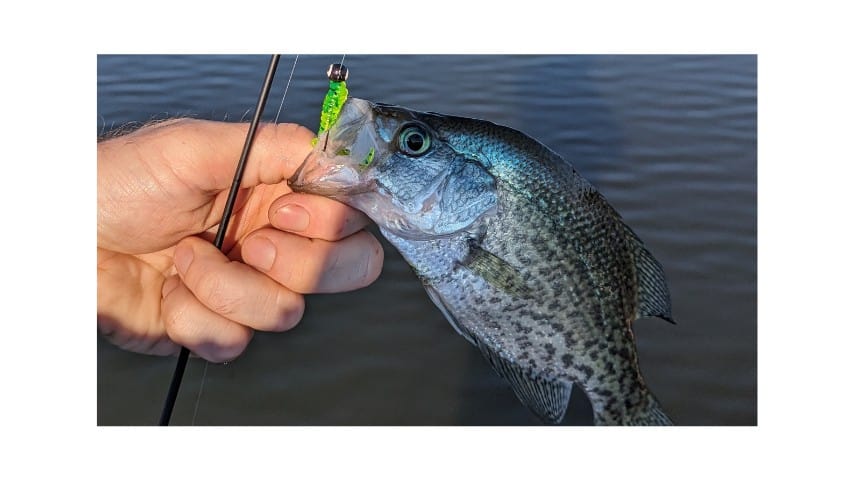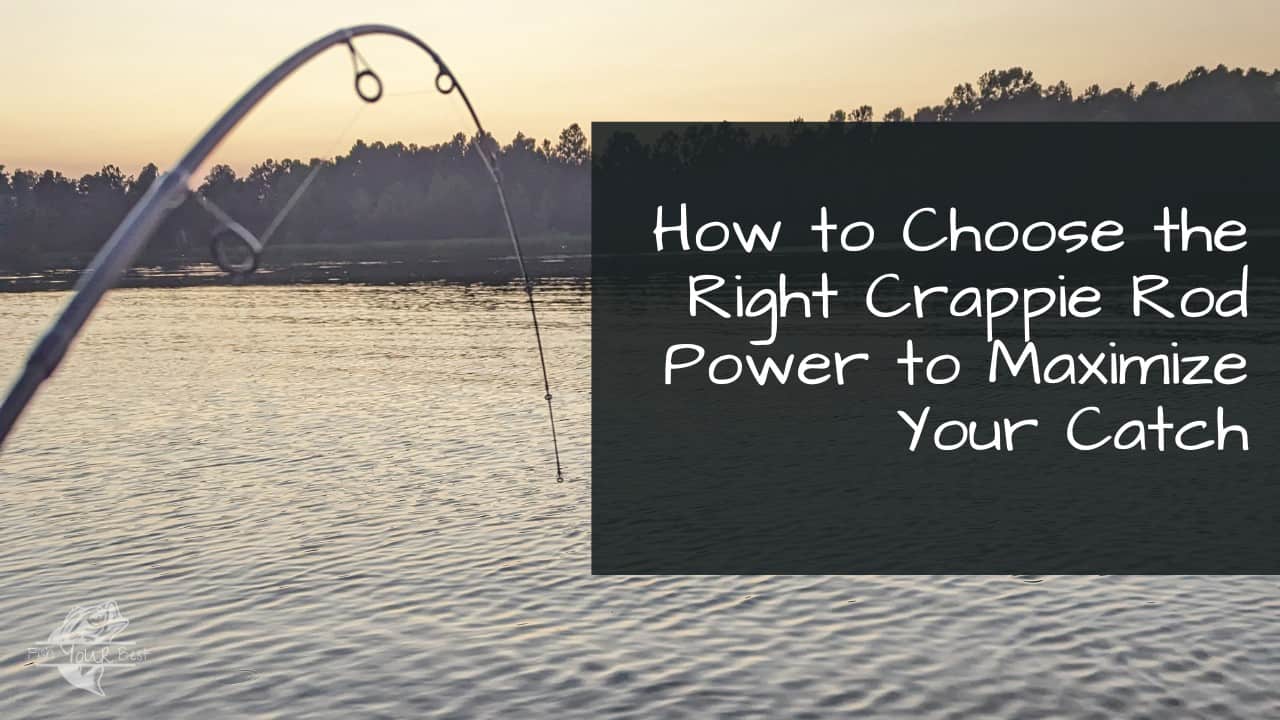How to Choose the Right Crappie Rod Power to Maximize Your Catch
Selecting the right crappie rod power is akin to finding the right language to communicate with the crappie, to feel their cautious nibbles and respond with a gentle yet firm hand. It’s about fostering a dialogue where the subtlety of crappie bites doesn’t get lost in translation, ensuring every interaction is a step towards a rewarding catch. As you navigate through the spectrum of rod power options, finding that sweet spot that resonates with your fishing style can turn the act of fishing into an enriching conversation between you and the crappie.
Key Takeaways:
- Rod power is a critical factor in crappie fishing, influencing the success of your fishing endeavor.
- Different levels of rod power are suitable for varying crappie fishing scenarios.
- Choose the right crappie rod with the appropriate power for an effective crappie fishing experience.
Crappie are a type of fish that require a specific approach. The delicate mouth of the crappie necessitates a rod that can handle the fish without tearing its mouth, yet having enough backbone to secure the catch. Here, the power of the rod becomes a significant factor. It’s not just about having any rod; it’s about having the right crappie rod with the right power.
Understanding Crappie Rod Power
Rod power refers to a rod’s stiffness or strength, indicating the force required to bend the rod. When selecting a fishing rod, you should match the rod power to the fish you are targeting.
The power of a rod is categorized into various levels ranging from ultra-light to heavy. Each level of rod power is designed to handle a specific range of lure weight and line size. Here’s a simplified table illustrating the various levels of rod power and their suitability for crappie fishing.
| Rod Power Level | Suitable for Crappie Fishing | Typical Lure Weight | Characteristics |
| Ultra-light | Yes | Up to 1/16 ounce | Extremely sensitive; ideal for small fish species |
| Light | Yes | 1/16 to 1/4 ounce | Offers a bit more strength; works well with light lines and small lures |
| Medium | Maybe | 1/4 to 1/2 ounce | Versatile; handles a wider range of lure weights and line sizes |
| Heavy | No | 1/2 ounce and above | Strongest rods; not suitable for crappie fishing |
Importance of Choosing the Right Rod Power
A successful crappie fishing outing starts with selecting the right power rod for the type of fish you will be targeting. A rod with too much power will lack the sensitivity to feel crappie bites, while a rod with too little power may not have the backbone necessary to hook and land crappie effectively.
The right rod power will allow you to:
- Feel subtle bites from crappie.
- Hook and land crappie effectively without tearing their delicate mouths.
- Cast and work lures effectively.
Different Levels of Rod Power
The choice of rod power will impact your crappie fishing experience. Ultra-light and light power rods are ideal for crappie fishing due to their high sensitivity, allowing you to detect subtle bites. They also work well with the light line and small lures typically used when targeting crappie.
On the other hand, medium power rods might be a choice for anglers targeting larger crappie or fishing in heavy cover where a stronger rod backbone is needed to extract fish.
Understanding and choosing the right rod power for crappie fishing can greatly impact your success and enjoyment on the water.
Factors Affecting Rod Power
Various factors influence the power of a fishing rod, each playing an influential role in determining how the rod performs when fishing for crappie. Understanding these factors will help you select a crappie rod that matches your technique and style.
Materials and Manufacturing Techniques
The materials used in constructing a fishing rod significantly affect its power. Here are some common materials:
- Graphite: Graphite rods are known for their stiffness and sensitivity, making them popular for crappie fishing.
- Fiberglass: Fiberglass rods are more flexible and less sensitive than graphite rods, yet they offer excellent durability.
- Composite: Composite rods, made from a mix of graphite and fiberglass, balance sensitivity, flexibility, and durability.
The manufacturing process also impacts the rod’s power. The layering, orientation, and types of materials used in the blank construction can greatly influence a rod’s strength and flexibility.
Rod Length, Action, and Taper
These three factors are meshed with rod power and significantly affect a rod’s performance in crappie fishing.
- Rod Length: Longer rods offer more casting distance and are better suited for covering more water. However, they may lack the sensitivity of shorter rods, which is crucial for detecting crappie bites.
- Rod Action: Action refers to where and how much a rod bends when pressure is applied. Faster action rods bend near the tip and are more sensitive, making them suitable for crappie fishing.
- Rod Taper: Taper, often associated with action, also affects a rod’s flexibility and sensitivity. A more gradual taper results in a slower action rod, while a steeper taper leads to a faster action rod.
Choosing the Right Crappie Rod
Choosing the ideal crappie rod requires a combination of understanding rod power, your fishing environment, and crappie behavior. It’s a decision that can significantly impact your success and enjoyment on the water. Take a look at these tips and recommendations to help you decide the best rod power for your situation.
Understanding Your Fishing Environment
The environment you’ll be fishing in plays a crucial role in determining the right crappie rod for you. Whether fishing in open water, around structures, or in heavy cover, the right rod power can make a difference.
- Open Water: Light to ultra-light power rods are ideal as they provide the necessary sensitivity to detect subtle crappie bites.
- Around Structures: Medium power rods are more suitable to help pull crappie out of structures without getting snagged.
- Heavy Cover: Medium power rods can provide the backbone needed to extract crappie from heavy cover.
Matching Rod Power with Line Weight and Lure Size

Matching your rod power with the appropriate line weight and lure size is vital for optimizing performance. Here’s a simplified guideline:
| Rod Power | Line Weight | Lure Size |
| Ultra-Light | 2-6 lbs | Up to 1/8 ounce |
| Light | 4-8 lbs | 1/8 to 1/4 ounce |
| Medium | 6-12 lbs | 1/4 to 1/2 ounce |
Top Recommendations for Crappie Rods
Numerous crappie rods are available in the market, each with unique features and advantages. Some top recommendations include:
- Ugly Stik Elite Spinning Rod: Known for its balance of sensitivity and strength, making it an excellent choice for crappie fishing.
- St. Croix Panfish Series Spinning Rod: Offers premium performance with its superior sensitivity and power.
- KastKing Crixus Spinning Rod: A budget-friendly option with decent sensitivity and power suitable for crappie fishing.
Frequently Asked Questions
What is the Ideal Rod Power for Crappie Fishing?
The ideal rod power for crappie fishing is typically ultra-light to light power. These rods provide the sensitivity to detect subtle crappie bites and the flexibility to avoid tearing the fish’s mouth during hook set and retrieval.
What is the Difference Between Rod Power and Action?
Rod power refers to the stiffness or strength of a rod, while rod action refers to where and how much a rod bends when pressure is applied. Both factors significantly affect the rod’s performance in crappie fishing.
How Do I Match Lure Size and Line Weight with Rod Power?
Matching lure size and line weight with rod power is vital for optimizing rod performance. Typically, lighter lures and line weights are paired with ultra-light to light power rods, while heavier lures and line weights are paired with medium to heavy power rods.
Final Thoughts
Venturing into crappie fishing can be an exciting experience, and having the right rod by your side is a game changer. The power of your crappie rod significantly influences your ability to detect bites, set hooks, and land crappie. Understanding rod power and how it meshes with other factors such as rod length, action, and the fishing environment, forms the cornerstone of rewarding crappie fishing.
Equipping yourself with a crappie rod that perfectly matches your fishing style and the prevailing conditions boosts your chances of success and amplifies your joy of fishing. Embrace the insights this article shares, and you will be set up for success on your next crappie fishing adventure.
Tight Lines and Happy Fishing!

